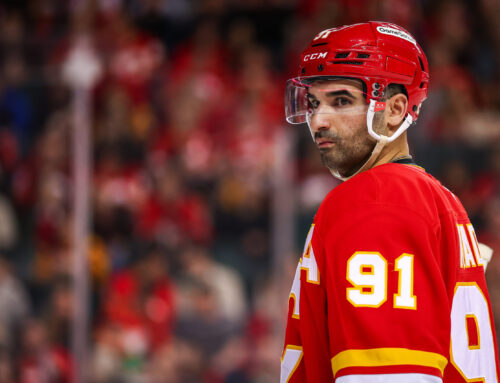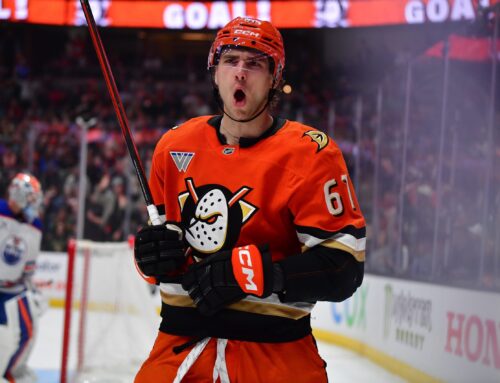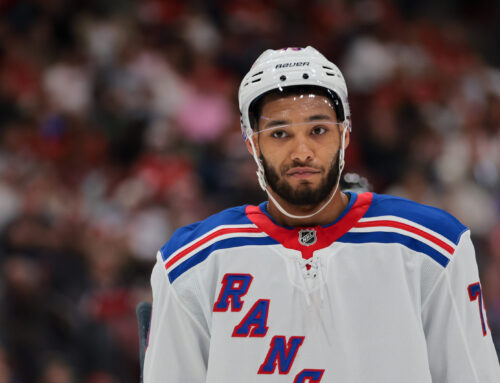One of the categories I find that often gets overlooked in fantasy hockey drafts is power-play production.
After all, most people just look at the total points, and figure if a player is getting points, then they're probably getting power-play points as well. They're not wrong, but oftentimes a player can be disappointing. Ryan Getzlaf, for example, hasn't produced on the power play in three seasons. Sean Couturier's PP production has topped out at 17 points, despite plenty of man-advantage minutes the past few seasons.
It's such an important category that a few times during the season, I try to do a list that shows power-play trends or surprising PP producers to encourage general managers to see if they can be picked up in your leagues. However, I figured this would also be a good time to look at who underperformed this past season.
Below are 10 players who received plenty of PP but didn't produce much.
10. Bo Horvat
It may seem strange to have Horvat on this list. After all, his 16 power-play points were only two off his career high. However, Horvat played 253:34 on the power play last season, 13th highest in the league. So his man-advantage production simply wasn't good enough. Especially when you consider that other Canucks on that top line had much better production. T.J. Miller and Quinn Hughes both had 25 PPP, and Elias Pettersson had 24.
There were 71 players with at least 200 power-play minutes this season. Brady Tkachuk was one of only two players to finish with fewer than 10 power-play points (the second player is much higher on this list). Tkachuk is already a beast in most leagues, finishing with 106 PIM, 259 shots and 303 hits in 71 games. Imagine how much value he will have once he can get to a consistent 30 goals, 70 points and 20 power-play points. He'd be an easy first-round pick in banger leagues. For now, his power-play production has been ugly with just eight man-advantage points this season.
A few years back, you could count on Johansen to post a minimum of 20 power-play points per year. He hit that mark in four straight seasons, averaging 23 PPP during that time. In the last two seasons, that number dipped to an average of 16. This year, it dropped even further, down to nine PPP in 68 games. No one knew what type of impact Matt Duchene was going to have on the Preds power-play, but it seems that it knocked Johansen off the top unit for games at a time. Not good, and it's another reason why Johansen should be undraftable in most leagues.
A season after putting the Hawks power play on his back, fantasy general managers were expecting much of the same, if not more, from the former Hawks defender this year. Last season, he didn't take over the Hawks power play until the middle of December, and he then posted 47 points (17 on the power play) in 49 games. So many were salivating over what he could do in an 82-game season. Gustafsson struggled, notching only eight power-play points in 59 Hawks games, before getting dealt to Calgary, where he picked up one more in seven games.
6. Sam Reinhart
When you're playing with an elite player on the power play, you need to produce more than 12 power-play points. Tied to the hip of Jack Eichel, Reinhart was on the ice for 71.1 per cent of all of Buffalo's PP minutes this season. The Sabres had the 20th overall power play, with Eichel leading the way with 27 PPP. Rasmus Dahlin had 19 and rookie Victor Olofsson had 17 in only 54 games.
5. Taylor Hall
Hall was never a great power-play producer until his second year in New Jersey, when he exploded for 37 power-play points (more than his previous three seasons combined). He followed that up with 12 man-advantage points in 33 games in 2018-19. So, this year's 18 PPP, while nice, wasn't as great as many were expecting. It was mostly the trade to Arizona that brought down that total. He had 12 power-play points in 30 games with the Devils, but only six in 35 games with Arizona.
There's no reason why Point should have only 13 power-play points. Sure, he was injured to start the season, but he missed only four games. It could be a case of bad puck luck. His power-play linemates — Nikita Kucherov (25 PPP in 68 games), Victor Hedman (22 in 66) and Steven Stamkos (19 in 57) — had no issue racking up points. Point's individual points percentage (IPP) is 43.33 per cent. IPP measures how many points you had on goals that were scored when you were on the ice. Point's number is pretty low. Kucherov, for example, was at 71.43 per cent while Stamkos was at 67.86 per cent and Hedman at 73.33. This suggests that while Point is on the ice while the goals are scored, he's simply not picking up points.
As mentioned in the Tkachuk section, Toews is the second player that had at least 200 power-play minutes this season with fewer than 10 PPP. When the season was suspended, Toews had just eight man-advantage points in 70 games. That's a far drop from the 23 he had a year ago, and the lowest since the lockout-shortened season in 2012-13, when he had six power-play points in 47 games.
2. Oliver Ekman-Larsson
I haven't been that big a believer in OEL for a while now, and I recently called him one of the most overrated fantasy players of the past decade. Despite that, he has always been a consistent power-play producer. Since 2013-14, he's averaged 21 power-play points per season. This year, that dropped to seven power-play points. The big reason behind that drop is a loss of power-play time. He averaged a minute less per game than last year. After coming back to the lineup on Feb. 10, he played 12 games and averaged 1:50 power-play time per game. In those games, Jakob Chychrun averaged 2:27 (in six games), Alex Goligoski averaged 2:05 and Jordan Oesterle averaged 1:47. That may not bode well for OEL next season.
Ovechkin plays almost the entire power-play for the Capitals, routinely on the ice for 90 per cent of all PP minutes in a season. A year ago, he had 28 PPP, and the season before that he finished with 32. He came into this season averaging 31 PPP per season for his career. That's why this season's 18 power-play points was off-kilter for him. It's strange, because Washington was still getting as many power plays as usual, but their conversion — which has been dropping for the last few years — was 19.4 per cent. As well, Ovechkin's IPP dropped this season to 47.37 per cent instead of the near 60 per cent he had each of the last two seasons.





 MTL
MTL
 PIT
PIT FLA
FLA S.J
S.J CGY
CGY MIN
MIN DET
DET
